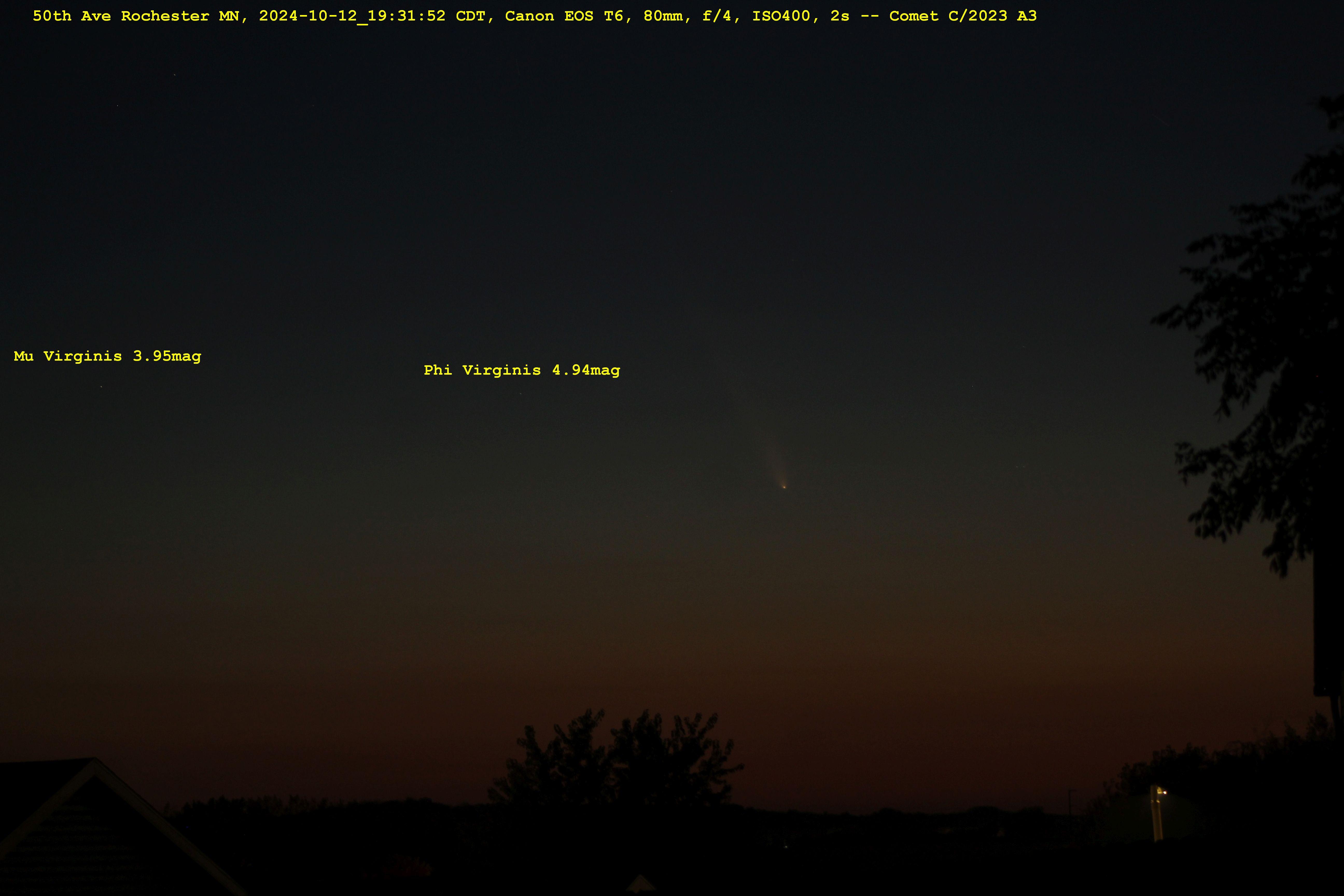Forum Replies Created
-
AuthorPosts
-
In the good old times almost everyone was publishing on forum observing tonight? That topic had so many pages that it made sense to stop it and create topics 2024 observing or 2025 observing
Of course, everyone can start their own topic, and it is OK. The problem is that nobody knows about it, unless one would go on a regular basis to the forum and search what is new.
I would suggest limiting the number of topics. We could create next year, let’s say on January 1st topic 2026-observing and EVERYONE interested would reply and check “Notify me of follow-up replies via email”. Then people would be notified about new messages/replies.Duane, we had great night at Frontenac, gorgeous Milky Way, mosquitos were not so bad. We were thinking about Eagle Bluff and comparing it to Frontenac.
Nice pictures.
For several days now, there has been a large spot in the sun visible to the naked eye, through protective glasses of course.

Today January 14 I observed comet C/2024 G3 ATLAS after sunset. I was observing over the KR7 reservoir, alternately photographing and observing with the binocular 10×50. Around 5:25pm I suddenly saw the comet in the reds low over the horizon in my 10×50. It had a bright nucleus and a distinct tail. I observed it for about 10 seconds. Then I looked away and tried to find it again, but I couldn’t. I can’t see it in the pictures either 🙁
Great idea. We should include some featured objects into our public events, for example M42 (Orion Nebula) or C14 (Double cluster).
Hubble imaged 87 of the 110 objects in the Charles Messier catalog and 89 of the 109 objects in the Caldwell catalog. So there is 87+89 = 176 potential objects to observe and compare with the Hubble images.On the Sun you can see a large spot with the naked eye protected by eclipse glasses in the left part.

Bob, article https://rochesterskies.org/comet-c-2023-a3-tsuchinshan-atlas/ is now updated with your beautiful pictures of the comet A3 from October 25 and October 27.
I think the very first opportunity to see C/2024 S1 (ATLAS) will come at 7:25 on the morning of October 29, when the comet will be at zero altitude on the Rochester horizon and the Sun will be about 3.5 degrees below the horizon. You might be able to see the tail rising, which should run diagonally to the right below Spica. Visibility will improve the next few days, but the brightness of the comet will fade.
Yesterday, Friday, October 25, I was briefly observing at the KR7 reservoir in the upper parking lot, which has a better view than the lower parking lot. Unfortunately, from here you can also see the light sources on the horizon and there is clear light pollution from the city. Still, it’s a good place to observe near the city. Clouds were chasing the sky. Comet C/2023 A3 was very visible in 10×50 binoculars and its tail was visible across the field of view. Close above the comet, the open cluster IC 4665 4m1, called the Summer Beehive, was clearly visible above the beta star Ophiuchi Cebalrai 2m9.
I had a meeting at Assisi Heights till 8 PM tonight, actually little bit longer. After, I tried to look at West horizon, I saw Arcturus, not Venus. I did not see comet A3 with certainty.
I hope I will go to the Root River park on Tue 10/15 to see A3 coma next to the M5, about 1 degree apart.
In the early evening, I went to Dakota Middle School. There’s a good view of the western horizon from there. On the way, I took a 50th Ave NW I noticed an unobstructed view of the western horizon in the gap between the houses so I observed from 50th Ave NW. I tried to capture the comet by camera. At about 7:10PM I saw the comet in the binocular and at about 7:20PM I saw the comet with my naked eye. It is a great comet and it will be even better!

The sky situation at the beginning of the public observation at Watson Soccer Fields. Two prominent celestial lights can be seen here: Venus and Arcturus. Comet A3’s height above the horizon was about 1.7 degrees lower than Venus. It is probably obscured by clouds in this image.
Tomorrow, Saturday, October 12, comet A3 will be 3.6 degrees higher at the same time.
After 8 p.m. I parked on 65th Street, walked to the field and took pictures of the aurora from my tripod. Suddenly I noticed a bright, almost vertical band to the west. I began to wonder what it was. For a few moments I thought it might be the tail of the now set comet A3, which has suddenly become very bright and only the tail is visible. However, it was obvious that it was not a comet, rather it was related to the aurora.
It was probably a phenomenon called STEVE (Strong Thermal Emission Velocity Enhancement), see https://en.wikipedia.org/wiki/STEVE.
2024-10-10_20:22:49 CDT, Canon EOS T6, 18mm, f3.5, ISO3200, 4 s
The constellation of the Corona Borealis is at the top center. More to the right is the constellation of the Boötes behind the pink aurora, the bright star Arcturus is lower in the center. On the upper right are the two stars of the handle of the Big Dipper.
Aurora Borealis over constellation Corona Borealis above 75th ST NW
-
AuthorPosts
